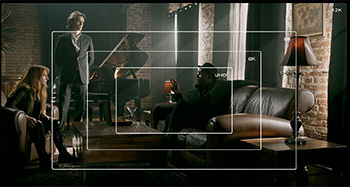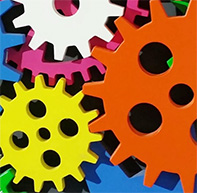Tip #1731: Do Filmmakers REALLY Need 12K?
… for Visual Effects
Tip #1731: Do Filmmakers REALLY Need 12K?
Larry Jordan – LarryJordan.com
Shooting 12K is like shooting multiple cameras for the price of one.


This article, written by Bryant Frazer, first appeared in the Frame.io blog. This is a summary.
In the early days of digital cinematography, it seemed like 2K might be enough for digital cinema and HD would be a decades-long standard for broadcast. But soon enough, Hollywood studios started finishing at 4K. And streamers like Netflix and Amazon Prime made 4K a new delivery standard for the era of peak TV.
Then Blackmagic Design forced the question of frame size last year with the introduction of the URSA Mini Pro 12K: How many Ks do we really need? What kind of situations need almost ten times the resolution of UHD?
Think about the 20-foot-high LED walls that are used for Mandalorian-style productions, where multiple shots are stitched together to create an ultra-high-resolution wraparound virtual set. Or massive outdoor screens that require similarly huge amounts of detail to make an impact.
In essence, shooting 12K is like having multiple cameras on location for the price of one (though, of course, lens choice will impact the creative possibilities of the shot tremendously.)
The article then goes into a detailed look at the new color sensor in the Blackmagic Design URSA Mini Pro 12K camera. It doesn’t use a Bayer pattern, instead, it uses a new image sensor that provides more accurate color.
The article next explores the benefit of using Blackmagic RAW as a codec, because much of the image processing is handled on camera, rather than requiring massive data pipelines in post-production.
VFX cinematographers are among the early adopters of this new 12K workflow, since increased resolution translates directly to higher-quality imagery, especially when creating blue-screen or green-screen composites.
Higher resolution yields higher-quality mattes.
EXTRA CREDIT
The article goes into more detail, with illustrations and examples of this new technology. Here’s the link.


I LOVED some of the creative work done with the PXL2000 cassette camcorder back in the day. There is something totally liberating about intentionally working at lo-res. https://en.wikipedia.org/wiki/PXL2000
and
https://www.youtube.com/watch?v=lRDcFoZtr90